How to Protect Your Car’s Interior from Sun Damage
Why Sun Exposure Damages Your Car’s Interior
Long-term exposure to direct sunlight and high temperatures can cause serious damage to a car’s interior. UV rays break down materials over time, leading to fading, cracking, and deterioration of seats, dashboards, and trim.
In Florida and other sunny climates, interior surfaces are constantly exposed to intense heat and humidity, which speeds up wear and tear. Without proper protection, the cabin can reach temperatures exceeding 140°F (60°C) on hot days, accelerating damage to plastics, leather, and fabric.
Common Sun-Related Interior Damage
Dashboard Cracking and Fading
The dashboard receives direct sunlight through the windshield, making it one of the most vulnerable areas. Without protection, plastic and vinyl dashboards dry out, crack, and lose their color.
Leather and Fabric Seat Deterioration
Leather seats are prone to drying, cracking, and fading when exposed to prolonged heat. Fabric seats can also weaken and discolor, especially if not cleaned and conditioned regularly.
Steering Wheel and Trim Damage
Frequent exposure to heat and UV rays causes steering wheels, door panels, and trim to fade or peel. Plastic components can become brittle and more prone to breaking.
Electronic Component Malfunctions
Extreme heat affects touchscreens, sensors, and dashboard electronics, leading to performance issues over time. Prolonged exposure may also weaken adhesives, causing buttons or displays to detach.
Best Ways to Protect Your Car’s Interior from Sun Damage
1. Use a Windshield Sunshade
A windshield sunshade is one of the easiest ways to reduce heat buildup inside the car. By blocking direct sunlight, it keeps the dashboard and seats cooler while preventing UV damage.
For maximum effectiveness:
- Choose a reflective sunshade with UV-blocking material.
- Use rear window and side window sunshades for extra coverage.
- If parked outside frequently, consider a full car cover.
2. Park in the Shade Whenever Possible
Whenever you have the option, park under trees, in a garage, or beneath covered parking structures. Even partial shade can make a significant difference in reducing interior heat and UV exposure.
If shaded parking isn’t available, angle your car so that the rear end faces the sun, reducing direct heat on the dashboard and steering wheel.
3. Apply a UV-Protective Interior Dressing
Protecting surfaces with a UV-resistant interior dressing prevents fading and cracking.
For dashboards, door panels, and trim:
- Use a non-greasy, UV-blocking protectant to condition plastic and vinyl.
- Avoid silicone-based products, which can leave a shiny residue.
- Apply a small amount and wipe evenly with a microfiber towel.
For leather seats:
- Use a pH-balanced leather conditioner with UV protection.
- Apply regularly to prevent drying and cracking.
- Avoid leaving leather seats untreated in direct sunlight.
4. Tint Your Windows for UV Protection
Window tinting reduces UV exposure and heat buildup inside the car. High-quality tint blocks up to 99% of harmful UV rays, preventing damage to seats and trim.
Benefits of window tinting:
- Reduces interior temperatures.
- Prevents fading and cracking of upholstery.
- Increases privacy and glare reduction.
Since tinting laws vary by state, ensure the tint level complies with Florida window tint regulations before installation.
5. Keep Your Windows Slightly Open for Ventilation
Trapping hot air inside the car increases heat damage and interior wear. Leaving the windows slightly open allows heat to escape, reducing overall cabin temperature.
For security and weather protection, window visors allow ventilation while preventing rain or debris from entering the car.
6. Use Seat Covers and Steering Wheel Covers
Protecting high-contact areas like seats and the steering wheel prevents long-term sun damage.
- Fabric or leather seat covers provide an extra barrier against UV rays.
- A breathable steering wheel cover keeps the material from cracking and makes driving more comfortable in the heat.
For those with luxury or custom interiors, using covers preserves the original material while reducing daily wear.
7. Regularly Clean and Condition Interior Surfaces
Dust, dirt, and oils contribute to premature fading and deterioration of interior materials. Regular cleaning helps maintain flexibility and durability in plastics, leather, and fabric.
Best practices for interior cleaning:
- Wipe down the dashboard, steering wheel, and door panels weekly with a microfiber cloth.
- Use mild cleaners instead of harsh chemicals that can weaken materials.
- Condition leather seats monthly to prevent drying and cracking.
How to Reduce Heat Buildup in Your Car
Crack Open the Sunroof or Rear Windows
Slightly opening the sunroof or rear windows improves airflow while keeping the car secure. This prevents heat from becoming trapped inside.
Use a Solar-Powered Ventilation Fan
A solar-powered fan helps push hot air out of the cabin. These fans install in the window and run on solar energy, keeping air circulating inside the car.
Cover the Dashboard with a Cloth or Towel
If you don’t have a sunshade, using a light-colored cloth or dashboard cover provides extra protection from direct sunlight.
When to Consider Professional Interior Protection
For long-term UV protection, professional detailing services offer ceramic coatings for interior surfaces. These coatings:
- Provide long-lasting UV resistance.
- Reduce fading and cracking in plastic and leather.
- Make cleaning and maintenance easier.
Ceramic coatings are ideal for:
- Luxury and high-end vehicles with delicate interiors.
- Cars frequently parked outdoors with high sun exposure.
- Owners looking for low-maintenance, long-term protection.
Final Thoughts
Sun damage can quickly deteriorate a car’s interior, but preventative measures keep it looking new for years. By using sunshades, window tint, interior conditioners, and proper ventilation, car owners can significantly reduce the effects of UV rays and heat buildup.
Regular maintenance and smart sun protection strategies preserve your dashboard, seats, and electronics, ensuring a comfortable and well-maintained cabin.
Leave a Comment Cancel Comment
Book Orlando Mobile Detailing
Search
Latest Post
-
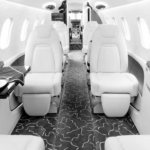 The Cost of Neglect: Why Regular Aircraft Detailing Saves Money in the Long Run
February 14, 2025
The Cost of Neglect: Why Regular Aircraft Detailing Saves Money in the Long Run
February 14, 2025
-
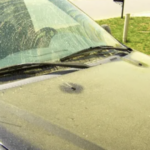 Why Car Washes Aren’t Enough to Combat Pollen Damage
February 13, 2025
Why Car Washes Aren’t Enough to Combat Pollen Damage
February 13, 2025
-
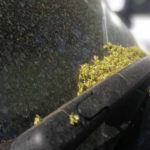 Orlando’s Pollen Problem: When Is It the Worst and How It Affects Your Car
February 13, 2025
Orlando’s Pollen Problem: When Is It the Worst and How It Affects Your Car
February 13, 2025
-
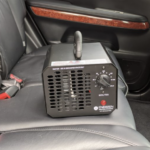 How Ozone Generators Eliminate Stubborn Car Odors in Orlando
February 12, 2025
How Ozone Generators Eliminate Stubborn Car Odors in Orlando
February 12, 2025
-
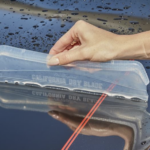 Why a Water Blade and Chamois Beat Towels Every Time!
February 9, 2025
Why a Water Blade and Chamois Beat Towels Every Time!
February 9, 2025
